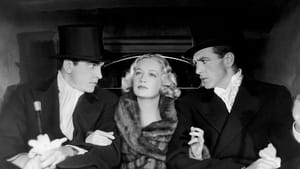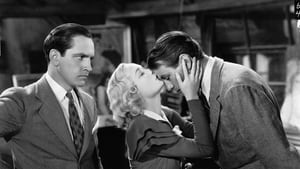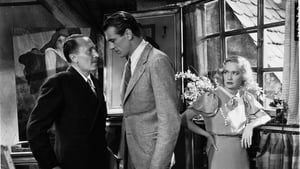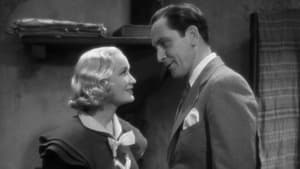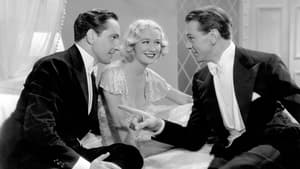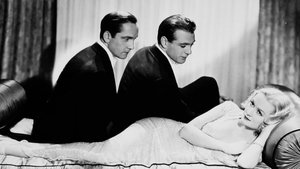Video Sources 0 Views
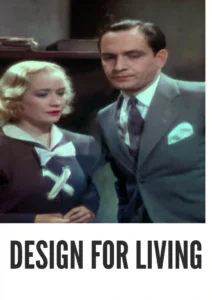
Synopsis
A Daring Love Triangle: Design for Living (1933) in Vibrant Color

Dive into the unconventional world of Design for Living, a daring and sophisticated comedy from 1933, now beautifully colorized for a modern audience. Starring Miriam Hopkins, Gary Cooper, and Fredric March, this film explores the complexities of a ménage à trois, challenging the social norms of the time with wit and charm. Perfect for fans of classic cinema and those seeking a risqué, pre-code gem, this HD download offers a fresh perspective on love, art, and freedom.
Design for Living Storyline: A Ménage à Trois in the Art World
Design for Living revolves around Gilda Farrell (Miriam Hopkins), an independent and free-spirited American woman living in Paris. She becomes romantically involved with two men: Tom Chambers (Fredric March), a playwright, and George Curtis (Gary Cooper), an artist. Unable to choose between them, Gilda proposes an unconventional arrangement: they will live together as friends and creative partners, with no romantic entanglements.However, their platonic pact is soon tested as jealousy and desire begin to surface. The trio navigates the complexities of their unique living situation, facing social disapproval and their own internal conflicts. As their fame and success grow, so does the tension within their unconventional household. Ultimately, Design for Living is a witty and provocative exploration of love, friendship, and the challenges of living outside societal norms, all set against the backdrop of the vibrant art world.
Movie Cast
The film boasts a stellar cast, bringing depth and charisma to their roles:
- Miriam Hopkins as Gilda Farrell
- Gary Cooper as George Curtis
- Fredric March as Tom Chambers
- Edward Everett Horton as Max Plunkett
- Franklin Pangborn as Mr. Douglas
Movie Genre
Design for Living is a sophisticated comedy with elements of romance and social commentary. Its witty dialogue, unconventional plot, and daring exploration of relationships make it a standout film of the Pre-Code era.
Historical Context: Pre-Code Hollywood and Social Rebellion
Released in 1933, Design for Living embodies the rebellious spirit of Pre-Code Hollywood, a period when filmmakers pushed the boundaries of censorship and explored controversial themes with greater freedom. The film’s frank depiction of sexuality and its challenge to traditional relationship structures reflect the changing social attitudes of the time. Design for Living remains a significant work for its bold storytelling and its reflection of a society in transition.
Colorization Details
This colorized version of Design for Living has been meticulously restored using modern digital techniques, enhancing the visual appeal while preserving the film’s original sophistication and charm. The colorization process involved carefully analyzing the grayscale tones of the original black and white footage and assigning appropriate colors to each scene. While the specific software used remains proprietary, the techniques employed included advanced algorithms for color palette selection and image enhancement. This painstaking process breathes new life into the characters and settings, making the story even more engaging for modern audiences. While some may debate the merits of colorizing classic films, it introduces these films to a broader audience, ensuring their legacy for future generations.
Technical Details
- Director: Ernst Lubitsch
- Screenplay: Ben Hecht
- Based on: the play by Noël Coward
- Cinematography: Victor Milner
- Edited by: Sam Beesly
- Production Company: Paramount Pictures
- Distributed by: Paramount Pictures
- Runtime: 91 minutes
Technical Specifications
- Download Format: MP4
- Resolution: HD (1080p)
- Compatibility: Compatible with most devices, including smartphones, tablets, computers, and smart TVs.
Reviews and Critical Reception
Design for Living (1933) is celebrated for its witty dialogue, sophisticated humor, and daring exploration of unconventional relationships. Directed by Ernst Lubitsch, the film is considered a classic of the Pre-Code era, pushing the boundaries of social norms and censorship. Its bold storytelling and stellar performances have solidified its place as a landmark in cinematic history.
FAQs
- Q: What is Design for Living about?
- A: Design for Living is a sophisticated comedy about a woman who enters into a ménage à trois with two men, challenging conventional relationship norms.
- Q: Is Design for Living (1933) a controversial film?
- A: Yes, Design for Living was considered controversial for its frank depiction of sexuality and its challenge to traditional relationship structures.
- Q: Is this version of Design for Living colorized?
- A: Yes, this version has been professionally colorized to enhance the viewing experience.
- Q: What makes Design for Living a classic?
- A: Design for Living is a classic for its witty dialogue, sophisticated humor, and daring exploration of unconventional relationships, reflecting the rebellious spirit of Pre-Code Hollywood.
- Q: What is the download format?
- A: The download format is MP4, which is compatible with most devices.
- Q: What resolution is the download?
- A: The resolution is HD (1080p), providing a high-quality viewing experience.
Download Now in HD!
Watch Design for Living Today!

